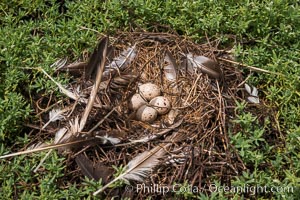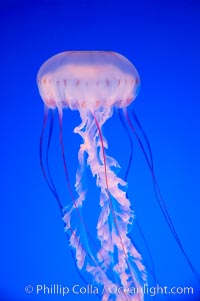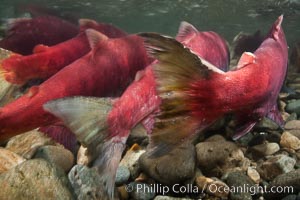
Sockeye salmon, migrating upstream in the Adams River to return to the spot where they were hatched four years earlier, where they will spawn, lay eggs and die.
Species: Sockeye salmon, Oncorhynchus nerka
Location: Adams River, Roderick Haig-Brown Provincial Park, British Columbia, Canada
Image ID: 26149
Species: Sockeye salmon, Oncorhynchus nerka
Location: Adams River, Roderick Haig-Brown Provincial Park, British Columbia, Canada
Image ID: 26149
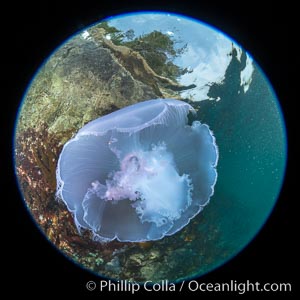
Moon jelly, Browning Pass, Vancouver Island, Canada.
Species: Moon jelly, Aurelia aurita
Location: British Columbia, Canada
Image ID: 35283
Species: Moon jelly, Aurelia aurita
Location: British Columbia, Canada
Image ID: 35283
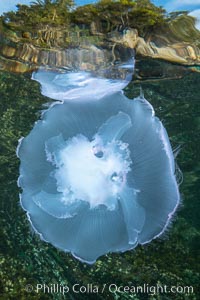
Moon jelly, Browning Pass, Vancouver Island, Canada.
Species: Moon jelly, Aurelia aurita
Location: British Columbia, Canada
Image ID: 35281
Species: Moon jelly, Aurelia aurita
Location: British Columbia, Canada
Image ID: 35281
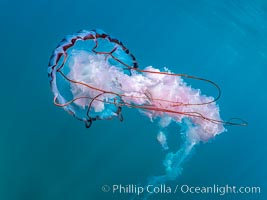
Purple-striped jellyfish, Coronado Islands, Mexico.
Location: Coronado Islands (Islas Coronado), Baja California, Mexico
Image ID: 37049
Location: Coronado Islands (Islas Coronado), Baja California, Mexico
Image ID: 37049
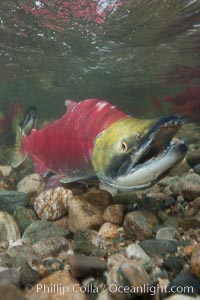
A male sockeye salmon, showing injuries sustained as it migrated hundreds of miles from the ocean up the Fraser River, swims upstream in the Adams River to reach the place where it will fertilize eggs laid by a female in the rocks. It will die so after spawning.
Species: Sockeye salmon, Oncorhynchus nerka
Location: Adams River, Roderick Haig-Brown Provincial Park, British Columbia, Canada
Image ID: 26147
Species: Sockeye salmon, Oncorhynchus nerka
Location: Adams River, Roderick Haig-Brown Provincial Park, British Columbia, Canada
Image ID: 26147
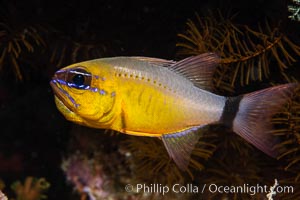
Ring-tailed cardinal fish, Male tending eggs in his mouth, Ostorhinchus aureus, Fiji.
Species: Ring tailed cardinalfish, Ostorhinchus aureus
Location: Namena Marine Reserve, Namena Island, Fiji
Image ID: 34786
Species: Ring tailed cardinalfish, Ostorhinchus aureus
Location: Namena Marine Reserve, Namena Island, Fiji
Image ID: 34786
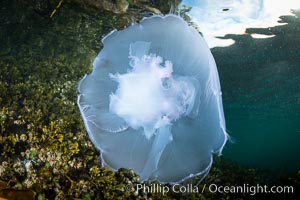
Moon jelly, Browning Pass, Vancouver Island, Canada.
Species: Moon jelly, Aurelia aurita
Location: British Columbia, Canada
Image ID: 35335
Species: Moon jelly, Aurelia aurita
Location: British Columbia, Canada
Image ID: 35335
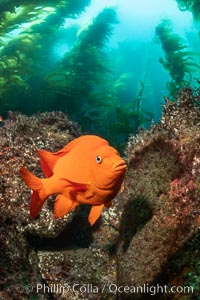
Garibaldi maintains a patch of algae (just in front of the fish) to entice a female to lay a clutch of eggs.
Image ID: 37144
Image ID: 37144
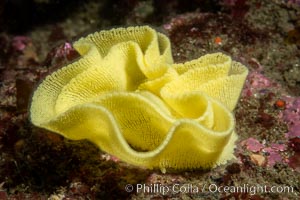
Nudibranch egg mass, likely that of Peltodoris nobilis.
Species: Peltodoris nobilis
Location: San Diego, California
Image ID: 37206
Species: Peltodoris nobilis
Location: San Diego, California
Image ID: 37206
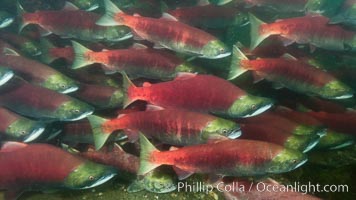
A school of sockeye salmon, swimming up the Adams River to spawn, where they will lay eggs and die.
Species: Sockeye salmon, Oncorhynchus nerka
Location: Adams River, Roderick Haig-Brown Provincial Park, British Columbia, Canada
Image ID: 26146
Species: Sockeye salmon, Oncorhynchus nerka
Location: Adams River, Roderick Haig-Brown Provincial Park, British Columbia, Canada
Image ID: 26146
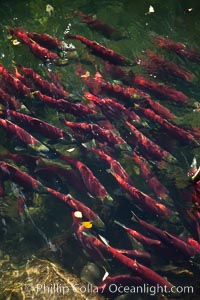
Sockeye salmon, swim upstream in the Adams River, traveling to reach the place where they hatched four years earlier in order to spawn a new generation of salmon eggs.
Species: Sockeye salmon, Oncorhynchus nerka
Location: Adams River, Roderick Haig-Brown Provincial Park, British Columbia, Canada
Image ID: 26165
Species: Sockeye salmon, Oncorhynchus nerka
Location: Adams River, Roderick Haig-Brown Provincial Park, British Columbia, Canada
Image ID: 26165
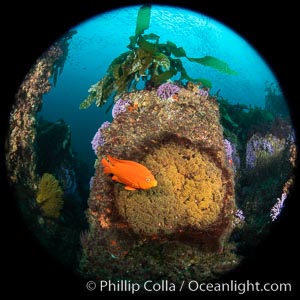
Garibaldi maintains a patch of orange algae (just in front of the fish) to entice a female to lay a clutch of eggs, Farnsworth Banks, Catalina Island.
Species: Garibaldi, Hypsypops rubicundus
Location: Catalina Island, California
Image ID: 37255
Species: Garibaldi, Hypsypops rubicundus
Location: Catalina Island, California
Image ID: 37255
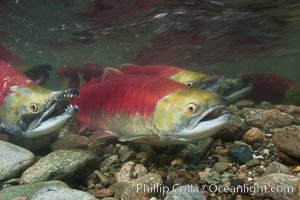
Sockeye salmon, swimming upstream in the shallow waters of the Adams River. When they reach the place where they hatched from eggs four years earlier, they will spawn and die.
Species: Sockeye salmon, Oncorhynchus nerka
Location: Adams River, Roderick Haig-Brown Provincial Park, British Columbia, Canada
Image ID: 26152
Species: Sockeye salmon, Oncorhynchus nerka
Location: Adams River, Roderick Haig-Brown Provincial Park, British Columbia, Canada
Image ID: 26152
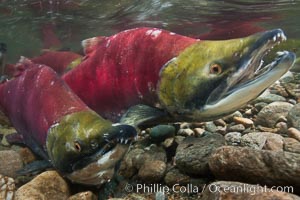
Two male sockeye salmon, swimming together against the current of the Adams River. After four years of life and two migrations of the Fraser and Adams Rivers, they will soon fertilize a female's eggs and then die.
Species: Sockeye salmon, Oncorhynchus nerka
Location: Adams River, Roderick Haig-Brown Provincial Park, British Columbia, Canada
Image ID: 26163
Species: Sockeye salmon, Oncorhynchus nerka
Location: Adams River, Roderick Haig-Brown Provincial Park, British Columbia, Canada
Image ID: 26163
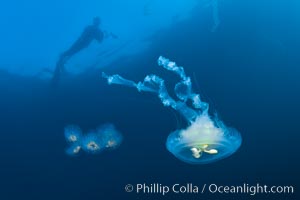
Freediver photographing pelagic gelatinous zooplankton, adrift in the open ocean.
Species: Fried-egg jellyfish, Phacellophora camtschatica
Location: San Diego, California
Image ID: 26817
Species: Fried-egg jellyfish, Phacellophora camtschatica
Location: San Diego, California
Image ID: 26817
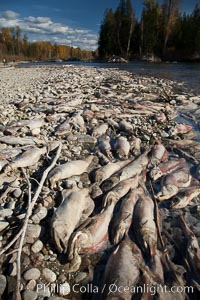
Carcasses of dead sockeye salmon, line the edge of the Adams River. These salmon have already completed their spawning and have died, while other salmon are still swimming upstream and have yet to lay their eggs.
Species: Sockeye salmon, Oncorhynchus nerka
Location: Adams River, Roderick Haig-Brown Provincial Park, British Columbia, Canada
Image ID: 26154
Species: Sockeye salmon, Oncorhynchus nerka
Location: Adams River, Roderick Haig-Brown Provincial Park, British Columbia, Canada
Image ID: 26154
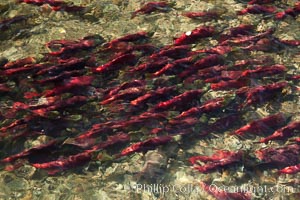
Sockeye salmon, swim upstream in the Adams River, traveling to reach the place where they hatched four years earlier in order to spawn a new generation of salmon eggs.
Species: Sockeye salmon, Oncorhynchus nerka
Location: Adams River, Roderick Haig-Brown Provincial Park, British Columbia, Canada
Image ID: 26155
Species: Sockeye salmon, Oncorhynchus nerka
Location: Adams River, Roderick Haig-Brown Provincial Park, British Columbia, Canada
Image ID: 26155
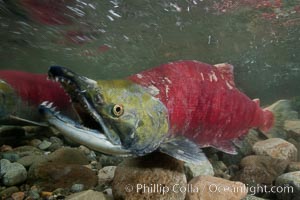
A male sockeye salmon, showing injuries sustained as it migrated hundreds of miles from the ocean up the Fraser River, swims upstream in the Adams River to reach the place where it will fertilize eggs laid by a female in the rocks. It will die so after spawning.
Species: Sockeye salmon, Oncorhynchus nerka
Location: Adams River, Roderick Haig-Brown Provincial Park, British Columbia, Canada
Image ID: 26151
Species: Sockeye salmon, Oncorhynchus nerka
Location: Adams River, Roderick Haig-Brown Provincial Park, British Columbia, Canada
Image ID: 26151
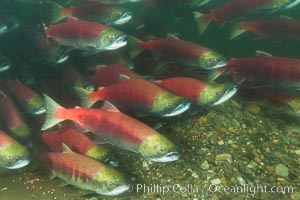
A school of sockeye salmon, swimming up the Adams River to spawn, where they will lay eggs and die.
Species: Sockeye salmon, Oncorhynchus nerka
Location: Adams River, Roderick Haig-Brown Provincial Park, British Columbia, Canada
Image ID: 26164
Species: Sockeye salmon, Oncorhynchus nerka
Location: Adams River, Roderick Haig-Brown Provincial Park, British Columbia, Canada
Image ID: 26164
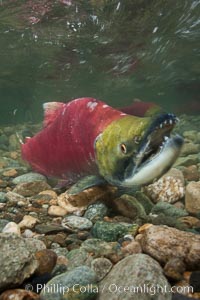
A male sockeye salmon, showing injuries sustained as it migrated hundreds of miles from the ocean up the Fraser River, swims upstream in the Adams River to reach the place where it will fertilize eggs laid by a female in the rocks. It will die so after spawning.
Species: Sockeye salmon, Oncorhynchus nerka
Location: Adams River, Roderick Haig-Brown Provincial Park, British Columbia, Canada
Image ID: 26166
Species: Sockeye salmon, Oncorhynchus nerka
Location: Adams River, Roderick Haig-Brown Provincial Park, British Columbia, Canada
Image ID: 26166
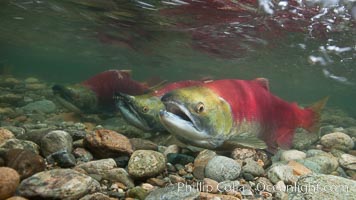
Sockeye salmon, swimming upstream in the shallow waters of the Adams River. When they reach the place where they hatched from eggs four years earlier, they will spawn and die.
Species: Sockeye salmon, Oncorhynchus nerka
Location: Adams River, Roderick Haig-Brown Provincial Park, British Columbia, Canada
Image ID: 26169
Species: Sockeye salmon, Oncorhynchus nerka
Location: Adams River, Roderick Haig-Brown Provincial Park, British Columbia, Canada
Image ID: 26169
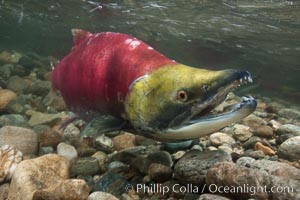
A male sockeye salmon, showing injuries sustained as it migrated hundreds of miles from the ocean up the Fraser River, swims upstream in the Adams River to reach the place where it will fertilize eggs laid by a female in the rocks. It will die so after spawning.
Species: Sockeye salmon, Oncorhynchus nerka
Location: Adams River, Roderick Haig-Brown Provincial Park, British Columbia, Canada
Image ID: 26171
Species: Sockeye salmon, Oncorhynchus nerka
Location: Adams River, Roderick Haig-Brown Provincial Park, British Columbia, Canada
Image ID: 26171
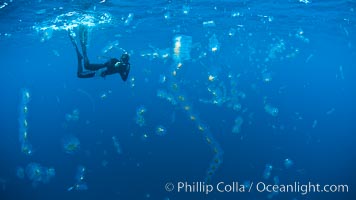
Freediving photographer in a cloud of salps, gelatinous zooplankton that drifts with open ocean currents.
Location: San Diego, California
Image ID: 27012
Location: San Diego, California
Image ID: 27012
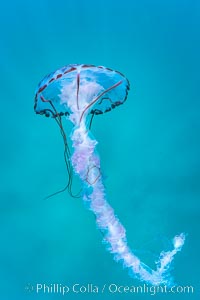
Purple-striped jellyfish, Coronado Islands, Mexico.
Location: Coronado Islands (Islas Coronado), Baja California, Mexico
Image ID: 37050
Location: Coronado Islands (Islas Coronado), Baja California, Mexico
Image ID: 37050
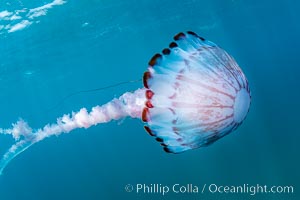
Purple-striped jellyfish, Coronado Islands, Mexico.
Location: Coronado Islands (Islas Coronado), Baja California, Mexico
Image ID: 37051
Location: Coronado Islands (Islas Coronado), Baja California, Mexico
Image ID: 37051
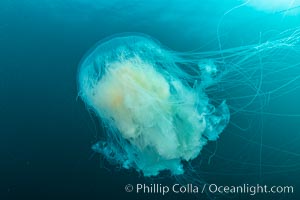
Fried-egg jellyfish, drifting through the open ocean.
Location: San Clemente Island, California
Image ID: 37088
Location: San Clemente Island, California
Image ID: 37088
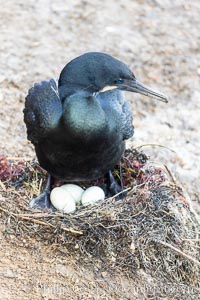
Brandt's Cormorant with eggs on the nest, nesting material composed of kelp and sea weed, La Jolla.
Species: Brandt's cormorant, Phalacrocorax penicillatus
Image ID: 36798
Species: Brandt's cormorant, Phalacrocorax penicillatus
Image ID: 36798
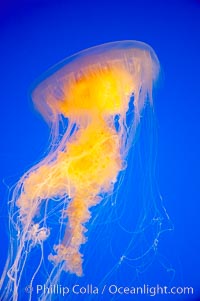
Egg-yolk jellyfish, fried egg jelly.
Species: Fried egg jellyfish, Phacellophora camtschatica
Image ID: 14035
Species: Fried egg jellyfish, Phacellophora camtschatica
Image ID: 14035
